Click on images to enlarge
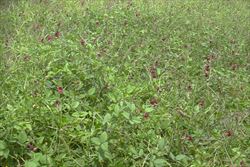
infestation (Photo: Forest and Kim Starr, USGS)

habit (Photo: Sheldon Navie)
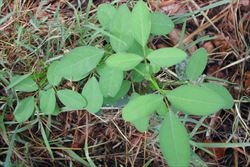
leaves (Photo: Sheldon Navie)
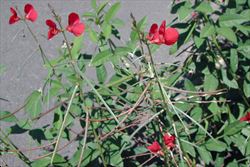
flower clusters (Photo: Sheldon Navie)
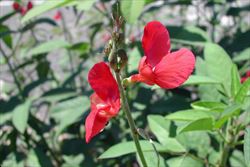
close-up of flowers (Photo: Sheldon Navie)
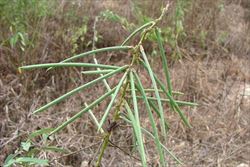
immature fruit (Photo: Sheldon Navie)

mature fruit (Photo: Sheldon Navie)

close-up of seeds (Photo: Tracey Slotta at USDA PLANTS Database)
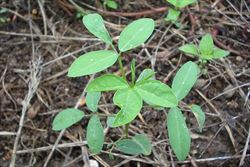
seedling (Photo: Sheldon Navie)
Scientific Name
Macroptilium lathyroides (L.) Urb.
Synonyms
Macroptilium lathyroides (L.) Urb. var. semierectum (L.) Urb.Phaseolus lathyroides L.
Family
Fabaceae (Queensland, the ACT, Victoria, Tasmania, and the Northern Territory)Fabaceae: sub-family Faboideae (New South Wales)Leguminosae (South Australia)Papilionaceae (Western Australia)
Common Names
cow pea, cowpea, pea bean, phasemy bean, phasey bean, wild bean, wild bushbean
Origin
Native to Mexico, Central America (i.e. Belize, Costa Rica, Guatemala, Nicaragua and Panama), the Caribbean and South America (i.e. French Guiana, Guyana, Surinam, Venezuela, Bolivia, Colombia, Ecuador, Peru, Argentina and Paraguay).
Naturalised Distribution
Widely naturalised in northern Australia. It is most common in north-eastern New South Wales, eastern Queensland and the northern parts of the Northern Territory. Also naturalised in the northern parts of Western Australia, in inland Queensland, and in some other parts of northern and central New South Wales.
Notes
Phasey bean (Macroptilium lathyroides) is regarded as an environmental weed in Queensland and the Northern Territory. This species was introduced and planted as a pasture legume, but it has escaped cultivation and is now a weed of roadsides, disturbed sites, waste areas, gardens, pastures, crops and natural vegetation (i.e. riverbanks, riparian areas, grasslands and open woodlands).

